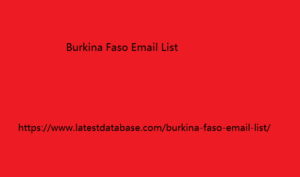User Experience: The Cornerstone of Digital Success
User satisfaction surveys
In the realm of digital experiences, user experience (UX) reigns supreme. It’s the invisible thread that weaves together every interaction, from the moment a user lands on a website to the final click. A seamless, intuitive, and enjoyable user experience is no longer a luxury; it’s a necessity.
What is User Experience (UX)?
User experience encompasses every aspect of a user’s interaction with a product or service. It’s about understanding user needs, designing intuitive interfaces, and creating products that are not just functional but delightful to use.
The Importance of User Experience
A positive user experience is crucial for several reasons:
- Increased Customer Satisfaction: When users have a positive experience, they are more likely to become loyal customers.
- Improved Conversion Rates: A well-designed user experience leads to more conversions, whether it’s Spain Email List a purchase, a sign-up, or a lead generation.
- Enhanced Brand Reputation: A positive builds trust and strengthens brand loyalty.
- Boosted SEO: Search engines prioritize in their ranking algorithms. A great UX can lead to higher search engine rankings.
Key Elements of a Great User Experience
A superior is built on several key elements:
- Usability: The product or website should be easy to use and navigate.
- Accessibility: Ensure your product or website is accessible to users with disabilities.
- Desirability: Create products that users want and love.
- Findability: Users should be able to easily find the information or products they are looking for.
- Credibility: Build trust by providing accurate and reliable information.
- Value: Deliver value to users by meeting their needs and exceeding their expectations.
Measuring User Experience
To understand how users PRESENT Artificial intelligence: the legal interact with your product or website, it’s essential to measure. Key metrics include:
- Bounce rate: The percentage of visitors who leave your site after viewing only one page.
- Click-through rate: The percentage of who click on a specific element.
- Conversion rate: The percentage of visitors who complete a desired action.
- Gather feedback directly from .
- User testing: Observe interacting with your product or website to identify pain points.
Conclusion: Competitive Advantage
In today’s competitive digital landscape, is a powerful differentiator. By prioritizing needs and creating delightful experiences, businesses can build loyal customer bases, increase revenue, and gain a significant competitive advantage. Remember, is not a destination, but an ongoing journey. Continuously iterate and improve based on user feedback to ensure your product or service remains at the forefront of satisfaction.
SEO Optimization:
- Relevant keywords: UX design, satisfaction, website usability, conversion rate optimization.
- Clear headings and subheadings for better readability.
- Focus on providing valuable insights and actionable advice.
- Optimize for mobile devices with short paragraphs and easy-to-read formatting.













